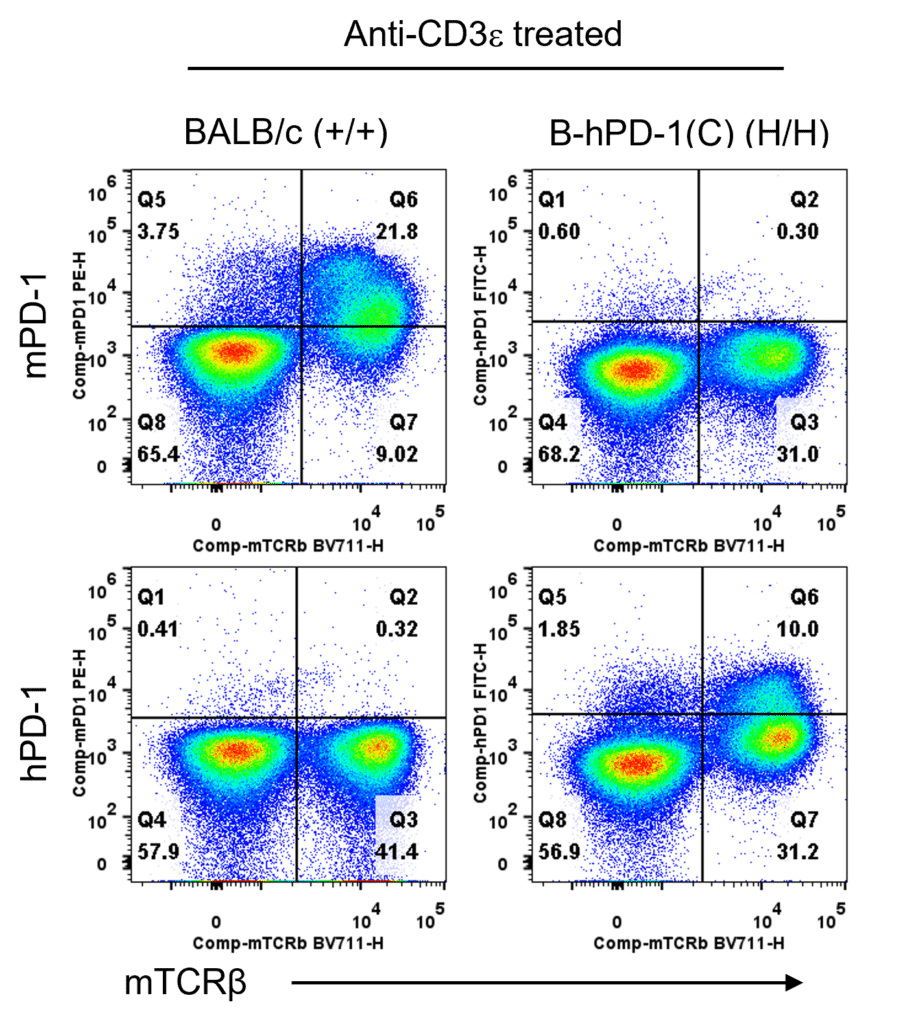Basic Information
-
Gene targeting strategy

-
Gene targeting strategy for B-hPD-1 mice(C). The exon 2 of mouse PD-1 gene that encodes the IgV domain was replaced by human PD-1 exon 2 in B-hPD-1 mice(C).
-
Protein expression analysis

-

Species-specific PD-1 protein expression analysis in wild-type BALB/c and humanized B-hPD-1 mice(C). Splenocytes were isolated from wild-type BALB/c (+/+) and homozygous B-hPD-1 (H/H) mice(C) stimulated with anti-CD3ε in vivo (7.5 μg/mice for 24 hours, i.p.) and analyzed by flow cytometry using species-specific anti-PD-1 antibodies. Mouse PD-1 protein was detected in wild-type mice, while human PD-1 protein was detected in B-hPD-1 mice(C).
-
In vivo efficacy of anti-human PD-1 antibody

-

Antitumor activity of anti-human PD-1 antibody pembrolizumab (in house) in B-hPD-1 mice(C). (A) Anti-human PD-1 antibody inhibited B-hPD-L1 CT26.WT tumor growth in B-hPD-1 mice(C). Murine colon cancer B-hPD-L1 CT26.WT cells were subcutaneously implanted into homozygous B-hPD-1 mice(C) (female, 9-week-old, n=6). Mice were grouped when tumor volume reached approximately 60-80 mm3, at which time they were treated with anti-human PD-1 antibody indicated in panel. (B) Body weight changes during treatment. As shown in panel A, anti-human PD-1 antibody was efficacious in controlling tumor growth in B-hPD-1 mice(C), demonstrating that the B-hPD-1 mice(C) provide a powerful preclinical model for in vivo evaluation of anti-human PD-1 antibodies. Values are expressed as mean ± SEM.
-
Summary

-
- Protein expression analysis:
Mouse PD-1 was only detectable in wild-type BALB/c mice. Human PD-1 was only detectable in homozygous B-hPD-1 mice(C).
- In vivo efficacious:
Anti-human PD-1 antibody were efficacious in controlling tumor growth in B-hPD-1 mice(C).


